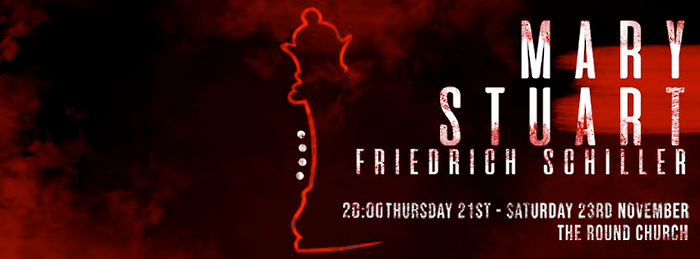Nell Gwynn does not quite deliver all its punchlines
A production with promise, but fails to fully commit to its titular character’s comedic potential
The Cambridge University Amateur Dramatic Club performed Jessica Swale’s Olivier-Award winning comedy Nell Gwynn based on the prolific historical figure from the Restoration period. The former prostitute Nell Gwynn rose from orange seller to the star of the stage and mistress of Charles II. Her career is an unlikely rise in the 17th century: as one of the first actresses she had to face backlash and critique by the male-dominated theatre world in which she still found a place as a shining star.

Considering a large part of the play is set in the playhouse of the King’s Company and depicting either the rehearsal or performance of scenes, it is a felicitous idea by director Flo Winkley to situate some of the cast around the audience in the first scene. When Nell (Anna Freeman) is literally brought up on stage from the aisles where she sells oranges, it sets the scene for Nell trying to balance her life between two chairs: her life as an actress from the streets of London and her pompous life in the palace. The set design by Jonathan Powell contributes to this unlikely dichotomy. The open playroom set is easy to identify with its messy writer’s desk and stage in the centre and a small changing room on the right. The balcony towering over it is a suitable place from which Charles II (Charlie Pottle) first spots Nell and indicates the power hierarchy between the two. The latter is also enforced by the palace being created through a front cloth decorated with portraits, having it situated literally in front of the playroom.
In addition to the aptly designed set, , the period costume design by Caroline Katzive is brilliant and attuned to every part’s individual character: the exuberant Kynaston is wearing rather extravagant pants, fellow orange seller Nancy is wearing flowing and loose robes liker her tongue, and the ruff of Hart marks him as the lead actor of the playhouse. Nell’s rise is mirrored in her clothing: from her shabby clothes worn during her time as a prostitute and orange seller to a more chic outfit worn during her time as an actress and eventually elaborate dress as mistress.
"The performers possess a great deal of chemistry and can successfully bring their different characters to life"
What the play does well in terms of costume and set design, unfortunately, is not always replicated in the technical aspects of it. Although the sound design (Kit Treadwell), consisting of short music pieces and fanfare sounds, is entertaining and enhances the historical atmosphere, it is usually cut out quite suddenly and would have profited from a slower fade-out. Moreover, the lighting (Mahon Hughes), well employed to indicate changes in character’s relationships, e.g. pink light to indicate a romance, could have added more dynamic to the play in other parts. For instance, handheld spotlights following the actors and the front stage being more floodlighted would have allowed for a clearer perception of the actor’s facial expressions. Of course, some of these might be understandable first night difficulties, especially considering the length of the play and number of actors involved.
Feminist themes are interwoven throughout the play. The women, especially Nell, do not bow to the men’s demands, not even to the King’s, but insist on having agency and control themselves. It is these scenes in the theatre and the quarrels between the male actors Charles Hart (Will Leckie), Edward Kynaston (Jack Medlin), playwright John Dryden (Lorenzo Montani), and director Thomas Killigrew (Max Thomas) about letting a woman on stage that bring the most dynamic to the play. The performers possess a great deal of chemistry and can successfully bring their different characters to life. Unsurprisingly, their scenes get the most laughs, along with Pottle’s performance as King Charles II.
Equipped with a black curly wig and gallant red garment, Pottle’s posture and demeanour indicate monarchy and the life of a man who never had to worry about anything and always got what he wanted. Only Nell is not as quickly charmed and convinced as he would like, and Freeman cannot always convince as much as her titular role demands. Her Nell could have been even more cheeky, jolly, and raunchy in order to earn some more laughs for her punchlines. In consideration of the circumstances of Nell’s rise, the play plays it safe where it could, and maybe should, have been even more sleazy and raunchy. Winkley could have taken some more risks in this salacious comedy which most provocative action is likely Kynaston flipping Nell the finger. However, the actors appear comfortable and well prepared in their roles throughout this long play.
Not all punchlines hit home in this comedic performance of Nell Gwynn but the actor’s enthusiasm and overall convincing and energetic performances make for an entertaining performance.
 News / Candidates clash over Chancellorship25 April 2025
News / Candidates clash over Chancellorship25 April 2025 Music / The pipes are calling: the life of a Cambridge Organ Scholar25 April 2025
Music / The pipes are calling: the life of a Cambridge Organ Scholar25 April 2025 Interviews / Dr Ally Louks on going viral for all the wrong reasons25 April 2025
Interviews / Dr Ally Louks on going viral for all the wrong reasons25 April 2025 News / Cambridge professor paid over $1 million for FBI intel since 199125 April 2025
News / Cambridge professor paid over $1 million for FBI intel since 199125 April 2025 Arts / Plays and playing truant: Stephen Fry’s Cambridge25 April 2025
Arts / Plays and playing truant: Stephen Fry’s Cambridge25 April 2025






